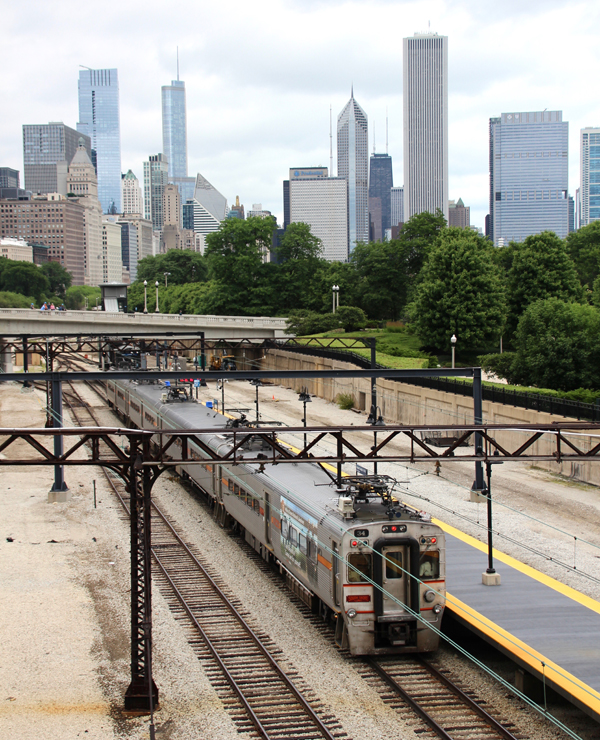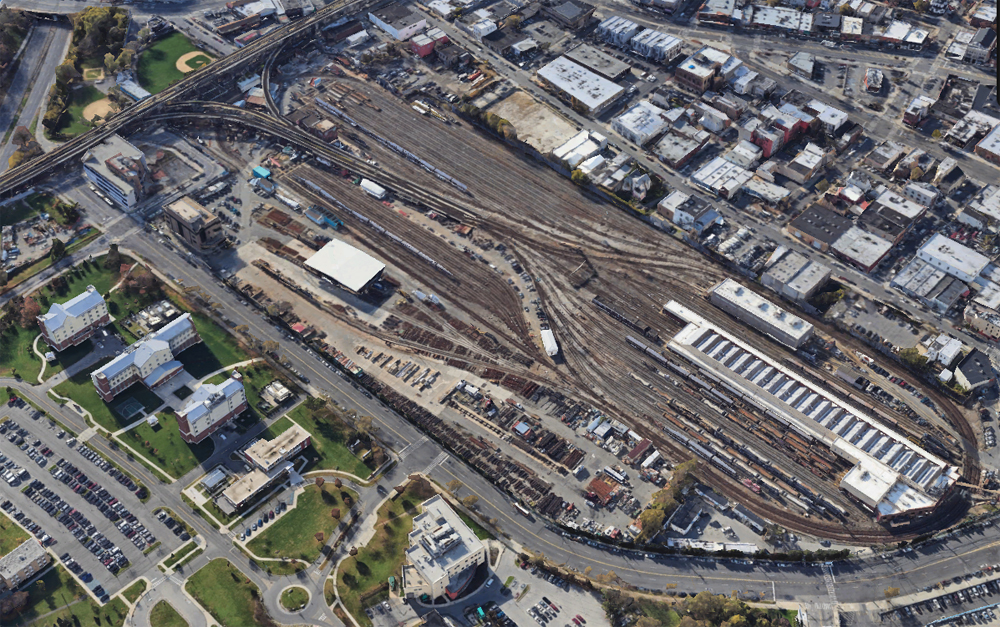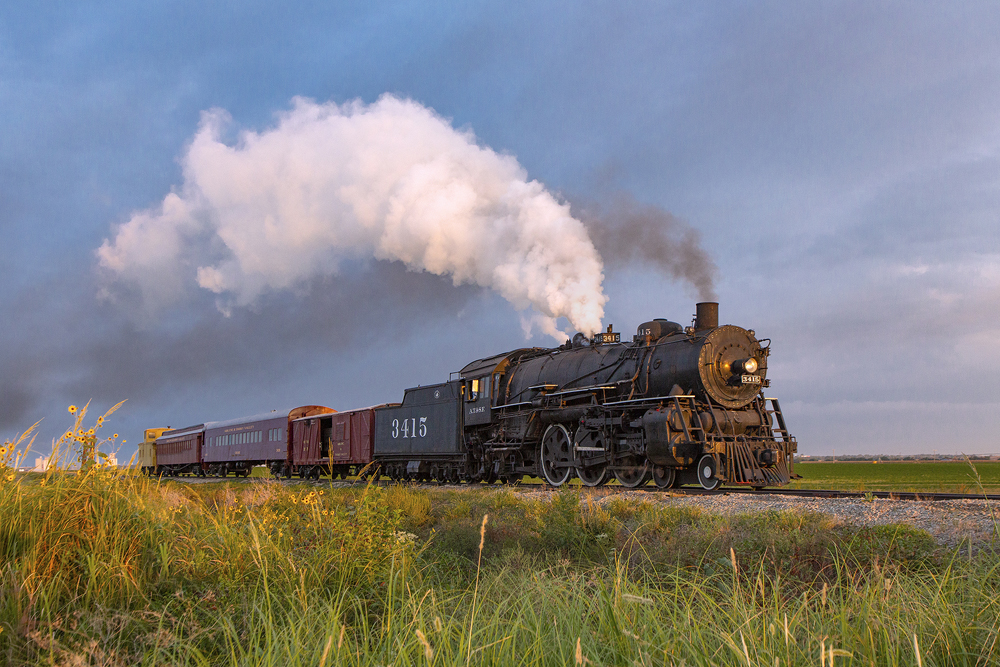WASHINGTON – The California High-Speed Rail Authority has filed two petitions with the Surface Transportation Board to reopen proceedings to make changes to two aspects of its high speed rail line under construction in the Central Valley.
The first document seeks to reexamine an exemption granted for 65 miles of high-speed line between Merced and
Fresno, Calif. This is the first segment of line approved for construction. Specifically, the agency seeks to make changes to a planned wye that would connect lines radiating to Fresno, Merced, and San Jose. According to the filing, the agency and Federal Railroad Administration initially considered five options for the wye in developing the preliminary analysis, but the final decision was deferred. Through the process, 17 options were identified, which went through additional review and saw local stakeholder input. The selected option was the “SR 152 (North) to Road 11 Wye Alternative,” which begins at the intersection of Henry Miller Road and Carlucci Road in Merced County, running east along the north side of State Route 152 toward Chowchilla. The agency now seeks to reopen its petition for the STB to consider the Selected Alternative for the Central Valley Wye.
The second document petitions the board to reconsider proceeding regarding the 114 miles of high-speed passenger rail
line between Fresno and Bakersfield, Calif. Specifically, the agency seeks approval of a modified route reached as part of a settlement with the city of Bakersfield, known as the “F-B LGA” or Fresno-Bakersfield locally generated alternative. The F-B LGA is a 23.13-mile alternative alignment between the city of Shafter and the city of Bakersfield, according to the filing. The alignment “will be located generally adjacent to the BNSF corridor through the City of Shafter. It will then traverse the area between the BNSF and Union Pacific corridors, and then continue adjacent, or nearly adjacent, to the UP corridor through the community of Oildale and the City of Bakersfield.














The CAHSR project is filled with problems. If you look at a map, Fresno and Bakersfield are in the Central Valley (there are mountains between these cities and the main population centers in Northern California (SF Bay area, including the 10th largest city in the US, San Jose) and Southern California (including LA and San Diego, two more of the 10 largest cities in the US). CAHSR chose the Central Valley to start the project because it was considered “easy”.
The Central Valley the easy part, but it goes beyond that. CalHSR has no real idea how to get from Bakersfield into the LA Basin, nor from the northern Valley into the Bay Area. CalHSR is a total fraud. But that’s what California voted for and Gavin Newson easily survived his recall election.
What bothers me most is that the Biden administration (another outright fraud) has bailed out the states rather than let them make their own way out of their own mismanagement. In other words it doesn’t matter how much money the states spend that they don’t have, because Biden sends trainloads of borrowed federal money their way.
What do you mean by “has no real idea how to get from Bakersfield into the LA Basin”? They are in the final process of completing the environmental review for the routes into LA and SF, so there are quite clearly identified ways to get there. If you mean money, did anyone require that Caltrans have all the money needed to build Interstate 5 from the Oregon border to the Mexican border in 1956 when the construction began? If so, it wouldn’t have been enough money come 1979 when the last segment was completed. It was simply not feasible to assemble 40,50 or even 70 billion dollars all at once at the beginning of the project, especially when much of that money would not be spent for up to 15 years.. When you say the CHSRA is a total fraud, have ever bothered to look at any of the monthly reports from their Finance and Audit Committee? There is documentation of every dollar spent, every change order, all construction progress.
This is simply a procedural step for something decided a couple of years ago. In both cases local stakeholders asked CHSRA to re-examine the routes thru Chowchilla and into Bakersfield and consider alternatives. In both cases a comprehensive supplemental EIS study was done on the new proposed alternatives. The studies were completed (several years age) and new improved routes developed. These were approved by the HSR Board and are now part of the plan. As I noted above this actually took place several years ago.
Steve Roberts
I read a report a couple of years back stating the reason the project was so far behind schedule and over budget rested squarely with Caltrans. Caltrans did not have the expertise in-house to complete the project. So, Caltrans hired consultants, who hired consultants, who hired consultants, who hired even more consultants. This is the proverbial “gravy train.” Now, to quote Yoda, “High speed they are not.”
BTW, I grew up on the east side of Detroit. I recall riding in my parents car on the Lodge Freeway on our way to picnics in Brighton. We drove past what was called the “Forgotten Freeway” – I-696. The exits had large piles of soil on them for the longest time. In the early 70s, I also recall the construction of 696 between I-94 and I-75, which went no further than I-75, due to the lawsuits in Royal Oak, Huntington Woods and Lathrop Village.
As an aside, we would watch the GTW freights come south on the Mt. Clemens line. Since the line was straight and flat, we could see headlights for miles from our vantage point at 8-Mile Road. When the freight went into and out of the shoe-fly at 11-Mile Road, the headlight disappeared and reappeared. Once the new bridge was completed, the disappearing act ceased.
CHRIS Thanks for the note. For those not familiar, the shoe-fly at 11 Mile (post above) in Macomb County was also for the Reuther Freeway, the segment built earlier. It’s along 11 Mile in Macomb County (Warren etc.) but the missing link is along 10 Mile in Oakland County (Royal Oak etc.). The Macomb County segment had M-6 as an interim shield but became I-696 when the entire highway was completed through.
Another missing link was part of I-75, the Walter P. Chrysler Freeway, which couldn’t be built until the route for the intersecting Walter P. Reuther was nailed down. So construction on the last link of the Chrysler started around 1970.
Chris, how old am I that 1983 – the start of construction of the last segment of the Reuther, seemed to be my middle age? In fact, the missing link of the Reuther started in 1983 and completed in 1989 became a major maintenance headache from the word go. And has been extensively rebuilt since.
It was also an exercise in paid-off NIMBYism on steroids, as you, Chris, allude to above, in this case the NIMBYs included giraffes and elephants. Although Detroit goes no further north than 8 Mile, the city owned two keys properties along 10 Mile, a golf course in Huntington Woods and the Detroit Zoo in Royal Oak City. So the Detroit city government got its several pounds of flesh out of M-DOT for a freeway that isn’t in Detroit or even in Wayne County. I also remembered the fuss over building the freeway through “wetlands” — which consisted of scattered puddles in Oak Park or Royal Oak Township after a heavy rain.
Don’t forget the Jewish constituency along the route that also held up the final segment of 696 until they had assurances they would still be able to walk (that is, not be required to take some form of transportation) to and from the Temple, as their faith requires.
Chris, California created a completely separate independent state agency for this project in California High Speed Rail Authority. I don’t think Caltrans has anything to do with it…
…
That being said, I have no idea why this wasn’t a caltrans project from the get go as they already had rail experience. More importantly, Caltrans has decades of real estate, right of way, procurement and legal experience with huge amount of resources in their offices. This was all created from skratch with CHSRA. To me as a Cali resident and supporter of more rail service including HSR is at a loss to why CHSRA was formed in first place
We are how many years into this and they have still not chosen a route for a major segment.
In 1968, Michigan Governor George Romney chose the 10 Mile Road alternative for the I-696 Walter P. Reuther Freeway through Huntington Woods and Royal Oak. Construction began in 1983. We’ll see if CalHSR can get this started in less than fifteen years. We will see.